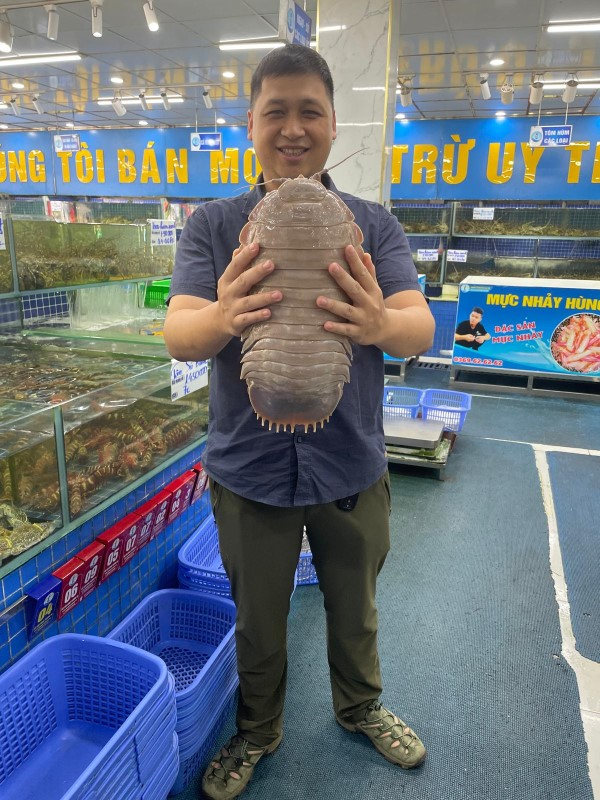Scientists working at a crustacean laboratory in Singapore have discovered a new-to-science species of “supergiant” isopod, and it’s an absolute wedge. Known as bọ biển or “sea bugs” in Vietnam, its angular noggin has inspired an out-of-this-world species name: Bathynomus vaderi, after everyone’s favorite absent father figure, Darth Vader.
B. vaderi is part of the genus of giant isopods called Bathynomus, a group that can reach over 30 centimeters in length and look like overgrown versions of our terrestrial pill bugs, or woodlice. This new-to-science species takes the supersizing one step further, however, belonging to a more exclusive group nicknamed the “supergiants”.
Its measurements reach up to 32.5 centimeters (12.8 inches) in length, and it weighs over a kilogram (2.2 pounds). Easy to spot, you might think, but it’s so far only been documented off the Spratly Islands in Vietnam. However, it’s possible further research could reveal these supergiants are elsewhere in the South China Sea.
Supergiant seems about right when you see a photo of a human being holding one of these isopods like a newborn photoshoot. While the positioning in the image below may slightly lean into the false perspective phenomenon, you can see from the human’s hands versus the bulk of sea bug that is the supergiant Bathynomus jamesi, that they are, indeed, absolute beasts.

Dr Nguyen Thanh Son holding another species of supergiant from Vietnam (B. jamesi) that weighed a whopping 2.62 kg from a seafood market in Hanoi in October 2024.
Image credit: Peter Ng
Impressive size aside, it was actually B. vaderi‘s angular head that inspired its species name. Closely resembling the iconic helmet of wheezy old Darth Vader, the most famous Sith Lord of Star Wars, it’s a fitting comparison for the daddy of all isopods.
However, another less fortunate nickname for giant isopods like B. vaderi is the “king of seafood”. Described as being even more delicious than lobster, its popularity as a menu item has boomed in recent years due to media attention and trends on socials, and they’ve gone from only being sold as bycatch to being the focus of commercial trawling. Spotting live isopods for sale in seafood markets in major cities has become commonplace, which is actually how this new-to-science species got named.
Two giant isopods purchased from Quy Nhơn City were sent to Peter Ng from the Lee Kong Chian Natural History Museum who runs the crustacean laboratory in Singapore. In 2023, he and his team realized they were housing a giant species that had never been described. A particularly remarkable finding given the size and strangeness of B. vaderi, and the researchers urge this highlights how much work there is still to be done to find out what is living in Southeast Asian waters.
We’ve tracked down Darth Vader, now where’s wrinkly old Palpatine?
The study is published in the journal ZooKeys.
Source Link: “Supergiant” Sea Bug Named After Darth Vader Is 32 Centimeters Long And Weighs A Kilo